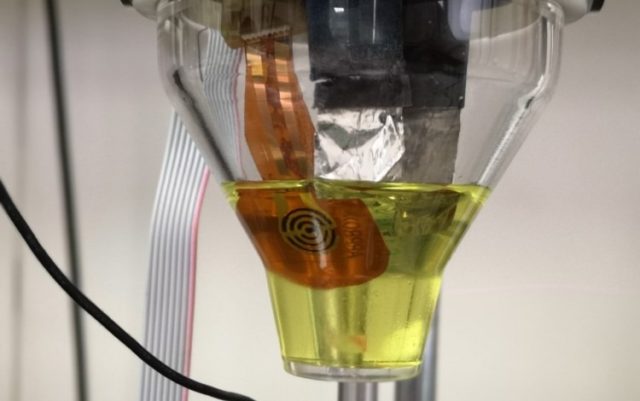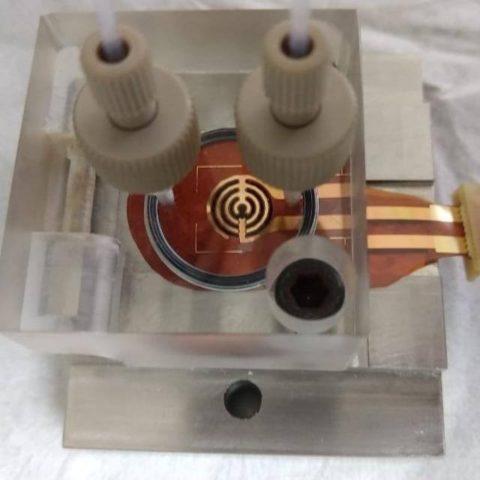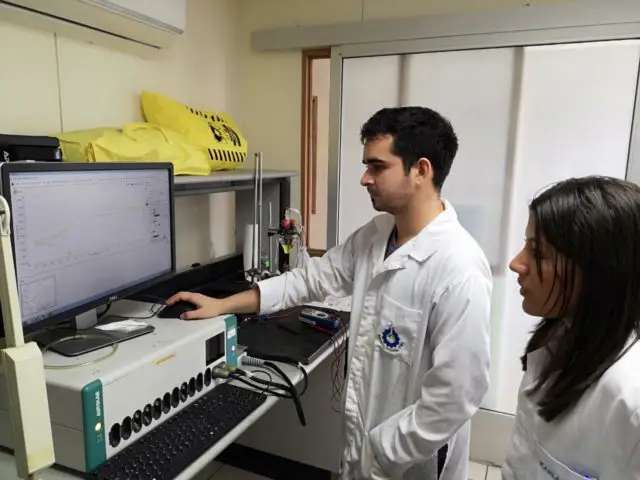
Contamination of water resources has become a matter of central concern at the national level. The gradual reduction of sources for human consumption demands great efforts to protect them.
For this reason, the detection of contaminants, such as pesticides, in water sources requires tools that allow in-situ analysis of the samples to offer an immediate response to the affected communities.
Given this, Dr. Ricardo Starbird Pérez, scientist from the Technological Institute of Costa Rica (TEC), together with researchers from the Schools of Electronic Engineering, Materials and Biology; In cooperation with the University of Costa Rica (UCR) and the National University (UNA), are developing sensors for the detection of pesticides in water.
According to Starbird, who is also a professor and researcher at the Center for Research and Chemical and Microbiological Services (Ceqiatec) of the TEC School of Chemistry, despite being an applied engineering job, it is still in the laboratory stage.
It is noted that these pesticides are found in water due to agricultural activity and the presence of these substances has been associated with diseases in humans and damage to ecosystems, if the maximum limits are exceeded.
“These results would benefit remote areas exposed to the substances, as it will allow them to take action as soon as they detect contamination of the aquifers,” said Dr. Starbird.
But how does the project work?
The electrodes are manufactured in the country, starting at the Materials Science and Engineering Research Center (Cicima) of the UCR, in collaboration with Dr.EstebanAvendaño Soto. There the metal deposition is carried out on a flexible film.In TEC, by means of microfabrication techniques with photolithography (manufacture of semiconductor devices) the shape of the electrodes is defined, which will be modified according to the substance to be studied.
For example, Dr. Oscar Rojas, from the Laboratory for Research and Development in Polymers (Poliuna) of the National University, facilitates gold nanoparticles that are added to the organic matrix for the determination of the biological activity of enzymes fixed on the electrode.Due to the results obtained, work is being done on the degradation of pesticides by means of electrochemical techniques with low-cost technologies.
Joint Effort

Also, in cooperation with the School of Physics of the National University, the characterization of the electrodes is carried out with Atomic Force Microcopy (AFM). These results are compared with those obtained at the TEC Institutional Microscopy Laboratory, with the support of Eng. Luis Alvarado and the MSc. Alejandro Medaglia.
According to Dr. Starbird, “the manufacture of specific electrodes with emerging technologies represents a technological contribution to the benefit of public health and the environment, especially for the preservation or improvement of systems or bodies of water that are under possible risk of contamination with residual substances from agro-industrial activities”.
In addition, he mentions that work is being done on the development of micro and nanoscale structuring of organic materials, seeking to improve the contact area and expand applications to tissue engineering and cell growth.
Along these lines, the project includes three master’s theses with funding from the Vice-Rector’s Office for Research and Extension (VIE) and the Ministry of Science, Technology and Telecommunications (MICITT), and researchers from the Center for Research in Biotechnology of the TEC and the School of Microbiology.
There was also the collaboration of student assistants from Environmental Engineering, Electronic Engineering, Biotechnology Engineering and Materials Science and Engineering. In addition, to graduate students in Master and Doctorate degrees.

It is important to highlight that this research has seven scientific articles indexed in Scopus, eleven participations in International Congresses (oral and posters) and more than 20 presentations in National Congresses.
Finally, collaboration is maintained with universities in Germany (TechnischeUniversität Hamburg, TUHH) and Spain (University of Santiago de Compostela, USC) within the framework of the European Network COST CA18125 “Advanced Engineering and Research of AeroGels for Environment and Life Sciences” on health and environment issues.


